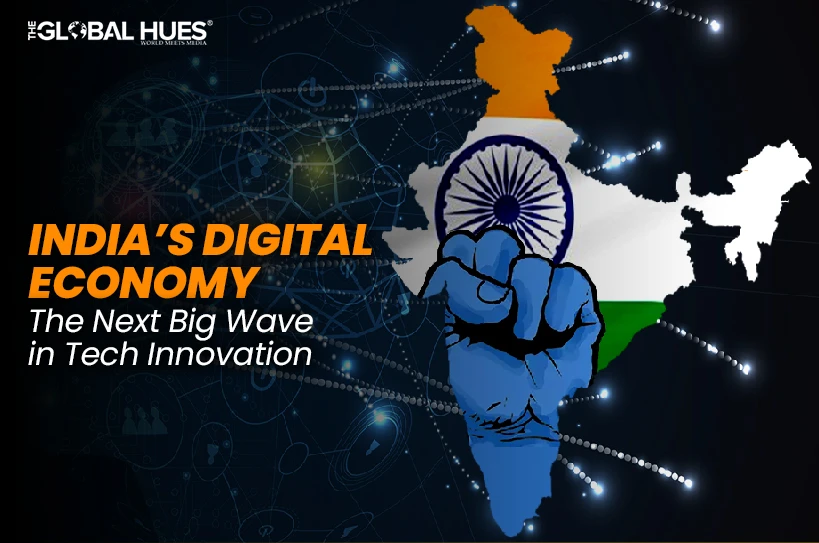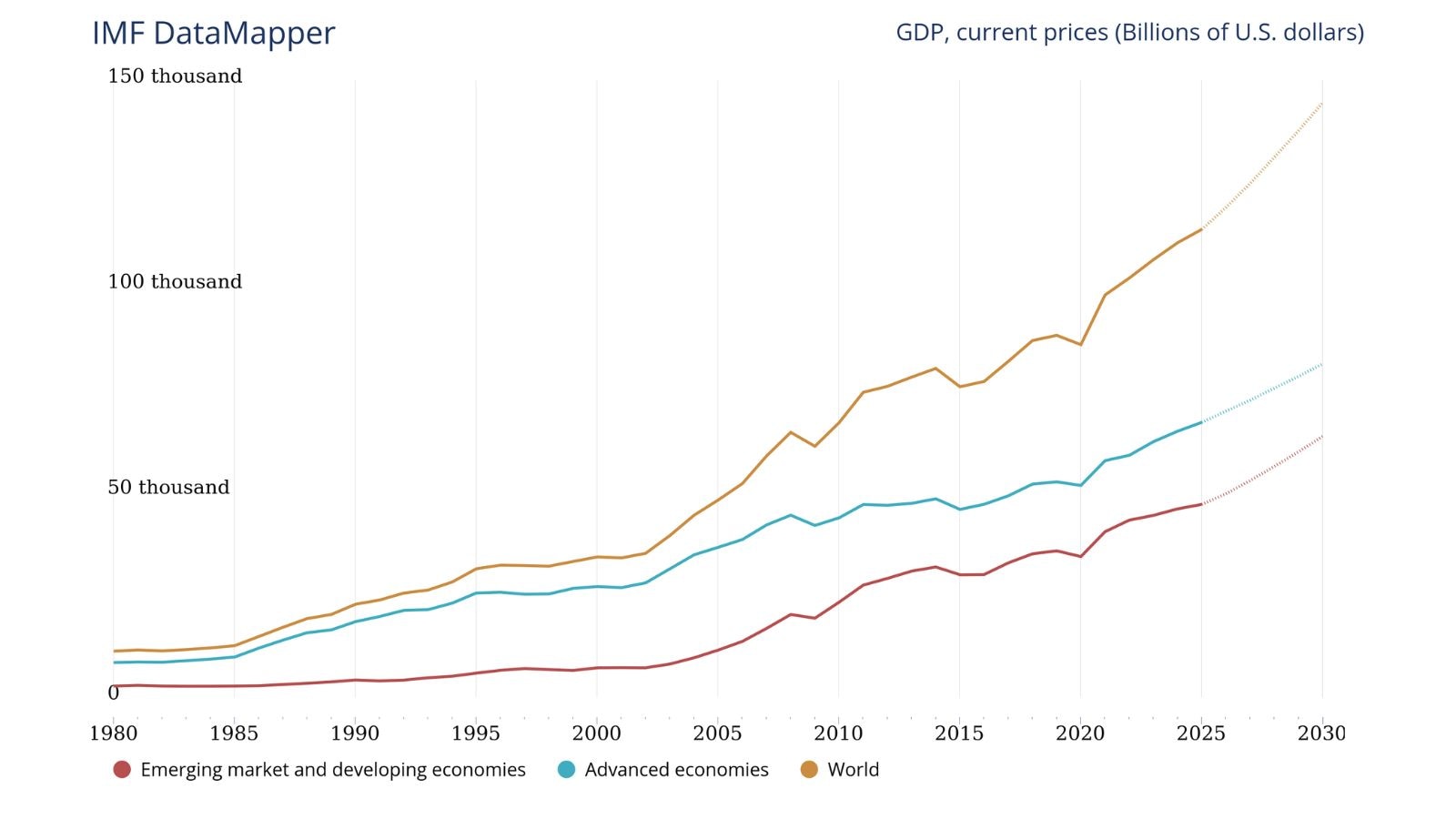
Source: IMF DataMapper – Economic growth trends as per GDP 2025 (The Indian Express)
Introduction
When we examine the global economic picture in 2025, we find one country that has redefined itself through rapid growth and is assuming a more important role in the world: India. The most populous nation on earth has reached a major landmark as it is set to overpass Japan as the world’s second-largest economy as their nominal output is expected to reach an estimated $4.09 trillion. This blog will dissect India‘s economic restructuring, pointing to the predominant forces behind its juggernaut, contrasting it with other economies of repute and analysing the challenges and opportunities that beckon the countr lie ahead.
India’s GDP Performance in 2025: A Statistical Overview
The IMF’s World Economic Outlook of April 2025 confirmed that India is now the world’s fourth largest economy with a Gross Domestic Product (GDP) of $4.19 trillion which has surpassed Japan. Despite this, the Indian economy remains a global leader in economic growth with a forecasted growth rate at 6.3% in 2026 and 6.2 % in 2025 significantly higher than that of most of the largest world economies.. The Hindu
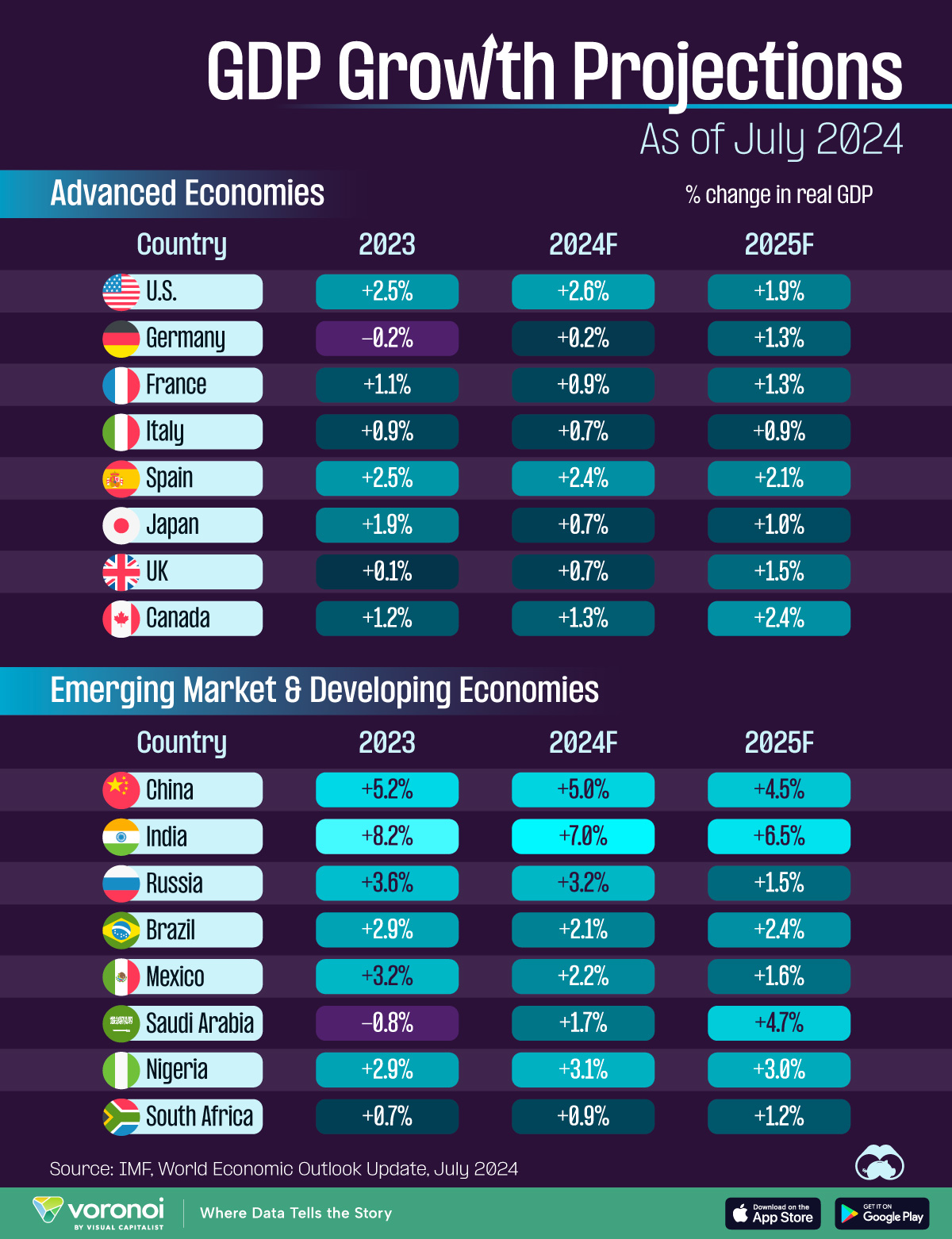
Source: Visual Capitalist – GDP Growth Projections for Key Economies (2024-2025)
The top global economies by GDP in 2025 are:
- United States: $30.51 trillion
- China: $19.23 trillion
- Germany: $4.74 trillion
- India: $4.19 trillion
- Japan: $4.19 trillion (slightly lower than India)
- United Kingdom: $3.84 trillion
While India’s GDP per capita remains at approximately $2,880 per person in 2025, the sheer scale of its economy represents a remarkable achievement, especially considering its starting point just a decade ago. ClearTax
Key Sectors Driving India’s Economic Growth
1. Manufacturing Sector

Source: CNBC TV18 – India’s Manufacturing Sector Growth
They also pointed out that manufacturing will now become important in the rise of India and that it was possible due to the Production-Linked Incentive (PLI) schemes in 14 key sectors. In 2025, the industrial sector is outperforming with Purchasing Managers’ Index (PMI) at a 10-month high in April 2025. The government’s aggressive push to get manufacturing to be 25% of GDP has made good progress but some obstacles remain.
The PLI scheme has garnered investments in electronics manufacturing, pharmaceuticals and automobile industries, with the government increasing the PLI budget for FY 2025-26 to further enhance growth in strategic sectors. This has positioned India as an increasingly viable alternative to China in global supply chains, particularly in electronics and automotive components manufacturing. India Briefing
2. Services Sector
India’s economy is still based on the services sector in 2025, with more than 50% of GDP. IT, BPM services, financials services, telecommunication, and healthcare services, have demonstrated outstanding resilience and growth.
IT services exports from India have scaled highs while the country continues to retain its position as the world’s top outsourcing destination for the software industry. Pandemic-induced digital transformation has opened new opportunities for Indian IT companies, who are moving up the value chain as service providers to innovation partners. Deloitte
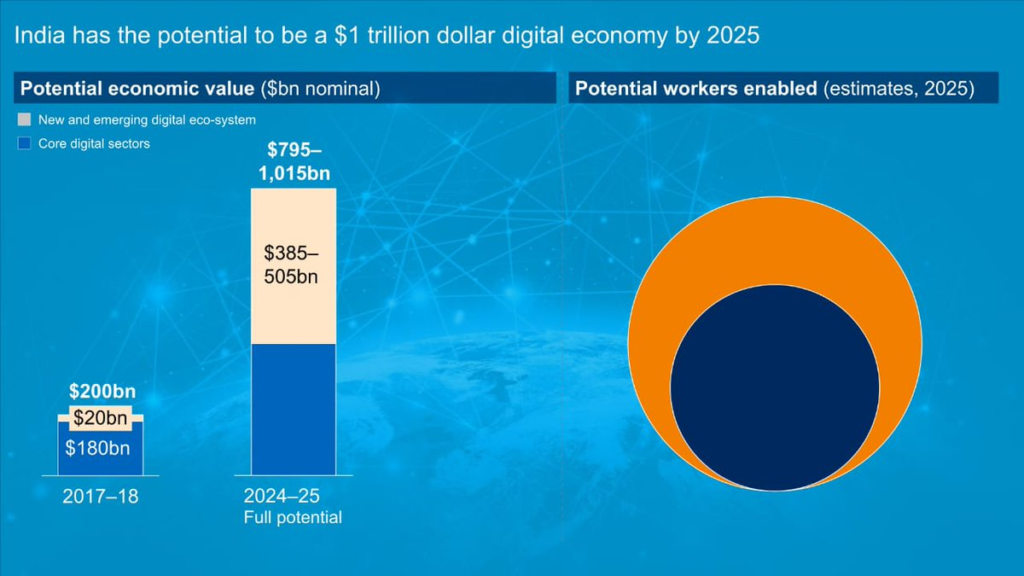
3. Agriculture Sector
Though its proportion of GDP is decreasing, agriculture is central to India’s economy, remaining the largest sector, employing nearly 40.% of the workforce. The industry is expected to expand by 3.8% in FY25 driven by technological advancement, better irrigation and crop diversification.
Agricultural productivity in some states has been raised by climate-resilient farming practices and the greater use of machines. The focus of the Government on farmer welfare through schemes and digital initiatives has started yielding positive results by way of rise in rural incomes and improvement in livelihood prospects. food security. ClearTax
4. Digital Economy

Source: The Global Hues – India’s Digital Economy
India’s quickly growing digital economy is one of the single biggest transformational factors powering the country’s economy. The Digital India campaign has played a key role in unleashing the growth of digital payments in e-commerce and tech startups. In 2025, India’s digital economy grows to twice that of the overall economy, signaling that India has successfully undergone a digital transformation.
The cloning of our Unified Payments Interface (UPI) as a foreign policy weapon is now passé with over a billion transactions a day. India’s startup ecosystem just keeps getting bigger and better, it now has more than 100 unicorns (startups that are valued at over $1 Billion) apart from some massive IPOs happening with many new ones on the way. valued at over $1 billion) as of 2025, attracting significant global investment despite the global funding winter. The Economic Times
India vs. Other Major Economies: A Comparative Analysis
Comparison with Developed Economies
India’s progress has been impressive but there are still large gaps between it and advanced economies such as the US and Germany. India’s economy is still less than one-seventh the size of the United States’, which remains the world’s largest at $30.51 trillion. Germany’s economy is also 13% larger at $4.74 trillion, for instance.
But the area where India really excels is that of growth. Even among most developed economies, only Argentina, Indonesia, and Turkey are expected to surpass 4% growth in 2025!2 Most developed economies are on a trajectory for 1-2% growth by 2025! QCOMPARE Comparing this range to growth projections for 2025 of 6.2% for India shows where it stands in terms of dynamism.within this decade if current trajectories continue.
India in the BRICS Context
India is now the fastest growing major economy of the five BRICS nations (Brazil, Russia, India, China, South Africa). The BRICS countries collectively recorded a GDP growth rate of 4 per cent in 2024, well above the 3.3 of per cent global average, with India and China so representing a large part of the expansion ( IMF).
The BRICS countries now make up about 40% of the global economy, a vast change in the distribution of global economic power. India’s strategic location in this bloc adds to its geopolitical bargaining power and access to alternative economic cooperation frameworks. BRICS Brazil
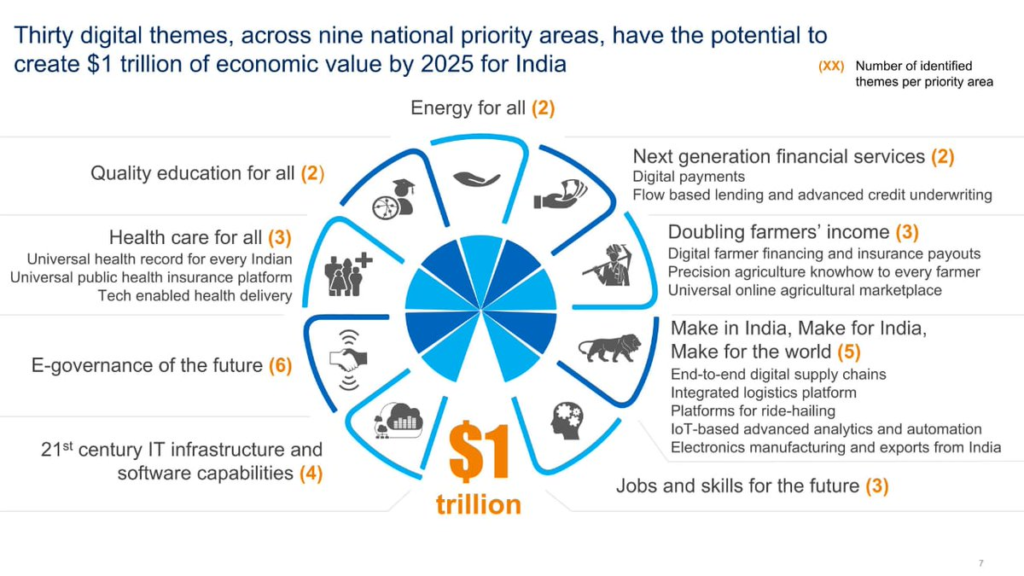
Economic Policies and Reforms Driving India’s Growth
India’s economic transformation isn’t accidental but the result of deliberate policy initiatives and structural reforms implemented over the past decade. Several flagship initiatives have been particularly impactful:
1. Make in India and Production-Linked Incentive (PLI) Scheme
The Make in India programme launched to transform India into a global manufacturing hub has received a fresh push from the PLI scheme. The PLI scheme is one of the major initiatives the government has taken to give financial incentives to companies across various sectors to drive manufacturing growth and create more jobs with an aim to make India more competitive.
The scheme aims to create employment of 22 lakh persons as well as achieve a turnover of Rs 4 lakh crore with an increase in exports. The push to cut down on bureaucracy and make it easier and doing business has positioned India as an increasingly attractive manufacturing destination. Economic Times
2. Digital India and Financial Inclusion
Digital India has redefined governance, commerce and inclusion. The JAM trinity has ensured that benefits directly reach millions of beneficiaries and cut down on leakages and wastage.
India’s digital public infrastructure, including UPI, Aadhaar and ONDC, has provided a strong framework for digital innovation and inclusion and can serve as an archetype for other developing countries.

3. Infrastructure Development
The PM GatiShakti National Master Plan along with the National Infrastructure Pipeline has fast-tracked infrastructure growth in different parts of the country.” A focus on multi-modal transport along land, rail, air and sea has cut costs of transportation and made it efficient.
These infrastructure projects not only increased domestic connectivity, but also made India a more appealing place for foreign capital to park itself, taking care of one long-standing hindrance to India’s growth.
Challenges and Opportunities Ahead
Challenges
- Income Inequality: Despite impressive headline growth, income inequality remains a significant challenge. The benefits of economic expansion have not been evenly distributed, with urban-rural disparities persisting.
- Employment Generation: Creating sufficient high-quality jobs for India’s young and growing workforce remains a critical challenge. The manufacturing sector has not absorbed labor at the pace initially anticipated.
- Global Economic Headwinds: Ongoing geopolitical tensions, supply chain disruptions, and potential global economic slowdowns pose risks to India’s export-oriented sectors.
- Environmental Sustainability: Balancing rapid economic growth with environmental sustainability presents complex policy challenges, particularly as India commits to ambitious climate goals.
Opportunities
- Demographic Dividend: India’s young population offers a potential demographic dividend, providing a labor force advantage over aging economies like China, Japan, and Western nations.
- Digital Innovation: The digital ecosystem’s continued evolution presents opportunities for leapfrogging traditional development stages and creating innovative solutions for inclusive growth.
- Renewable Energy Leadership: With significant investments in renewable energy, India has the potential to become a global leader in clean energy technologies and sustainable development.
- Global Supply Chain Diversification: As global companies pursue a “China plus one” strategy, India is well-positioned to attract manufacturing investments seeking diversification.
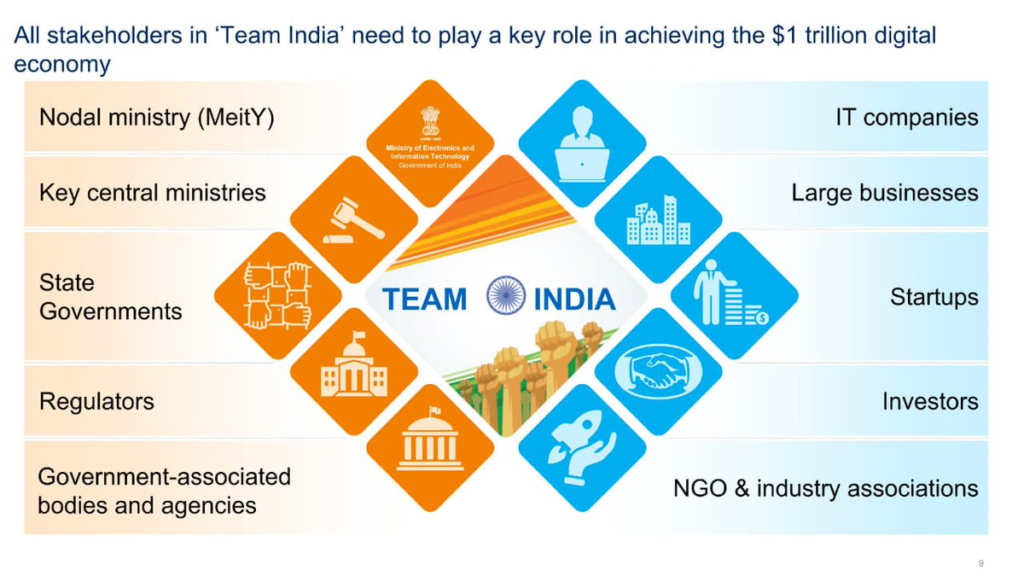
Conclusion: India’s Economic Future
India’s ascendance to become the world’s fourth-largest economy in 2025 represents a significant milestone in its economic journey. The combination of robust domestic growth drivers, strategic policy initiatives, and a favorable demographic profile positions India favorably in the evolving global economic landscape.
The road ahead has its own set of challenges, including job creation, infrastructure build-out and balanced regional growth, but the direction is clearly the right one. If the trend continues, India is on track to surpass Germany as the world’s third largest economy by the end of the decade.
As the world’s economic center of gravity moves east, India’s rise is not merely a statistical accomplishment but a qualitatively transformation, which has great implications to the world economic order, geopolitical relationsmens, and global institutions, we. the years ahead.
India’s journey from a developing economy to a global economic powerhouse represents one of the most compelling growth stories of the 21st century, with its full potential still unfolding.
This blog is based on data from the IMF World Economic Outlook (April 2025), government reports, and analysis from leading economic institutions. All statistics and projections are subject to revision as economic conditions evolve.
You can also explore our Other Blogs here: luxira.in

